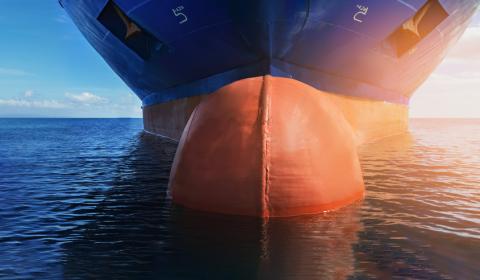
Client corner: Alternative fuels roundup 2020
The race is on to comply with sustainability regulations for 2030. Ship owners want to know: which alternative fuel is the best option?
What are the marine industry’s target goals for decarbonization?
The International Maritime Organization (IMO) has developed a set of targets for reducing carbon emissions from ships from now until 2050. By 2030, IMO expects vessels to reduce CO2 emissions by at least 40% per transport work, as compared to 2008 levels.
IMO has a further target date of 2050 for a 70% reduction of CO2 emissions and a minimum 50% decrease in annual greenhouse gas (GHG) emissions from shipping.
What alternative fuel options do ship owners have?
Today, ships can run on the following alternative fuels: liquefied natural gas (LNG), liquefied petroleum gas (LPG), methanol and biofuels. Alternative fuels currently under development include ammonia and hydrogen.
Can an lng-powered fleet meet imo targets?
While LNG produces almost no sulfur oxide (SOx) or particulate matter emissions, and can limit CO2 emissions by about 20% it is still a fossil fuel. Unburnt methane escaping from an engine (methane slip) is a potent greenhouse gas that might offset CO2 emissions reduction benefits from burning LNG for the older ships. New gas engines have drastically reduced methane slip. LNG might be considered by some as a transition fuel, viable on its own in the short-term, and in the longer term when used in combination with decarbonised LNG such as bio LNG or e-LNG acting as drop in fuels in a mix.
Can an lpg-powered fleet meet imo targets?
The arguments for LPG are rather different from LNG, but still limiting carbon emissions without eliminating them. LPG is for the time being limited to cargo as fuel onboard LPG carriers but it will not provide Nox Tier III compliance and its carbon reduction is very much limited in comparison with LNG. LPG production levels would need to greatly increase and more bunkering infrastructure would need to be developed to provide LPG to the global fleet by 2030.
Is methanol a viable fuel choice for ships?
Not sure, it will depend on the way methanol is going to be produced. Its combustion produces significantly reduced levels of CO2 emissions and no sulfur oxide (SOx) emissions. However, methanol bunkering facilities are limited, it will require further investment before being used on a large scale.
Are biofuels a viable fuel choice for ships?
Yes. Biofuels are a sustainable form of energy that do not release additional CO2 into the atmosphere. They are compatible with all ship engines and require no specific infrastructure, making them both convenient and accessible.
However, some marine stakeholders believe that biofuels could power at most 30% of the global fleet. So some ship owners and operators may be able to meet IMO’s 2030 and 2050 targets through biofuels alone in a mix with existing fossil fuels. Marine will benefit from the Aviation sector work on that technical field.
How developed is ammonia as a fuel?
Ammonia is a promising fuel option for ships, as its molecule does not contain carbon atoms. Technology developers and manufacturers and Bureau Veritas are currently working to overcome the remaining challenges with ammonia, notably around combustion performances and toxicity.
Depending on how quickly regulations are developed, and how much stakeholders invest in ammonia-based technologies, ship owners may be able to use ammonia as fuel soon.
How developed is hydrogen as a fuel?
Hydrogen is already used in fuel cells onboard small crafts and passenger shuttles for years. However hydrogen is not yet ready to be used as fuel for large ocean going ships. The long-distance and long-term onboard storage of hydrogen especially in cryogenic liquid form remains an expensive challenge to solve.
Hydrogen distribution, storage and bunkering facilities are still being developed, and regulations around hydrogen as fuel have yet to be undertaken. While hydrogen may eventually become a viable alternative fuel, it may lag behind biofuels and ammonia for large ocean going vessels.
YOU MAY ALSO LIKE










